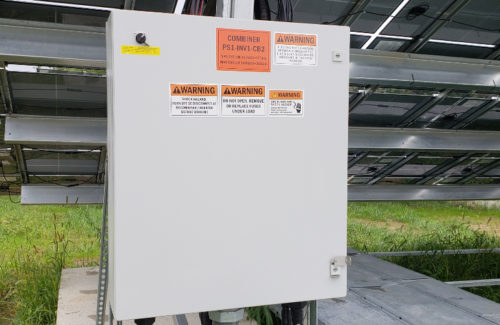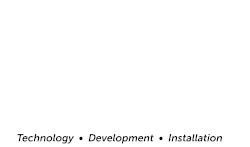By Tim O’Connor, VP of sales, LEM Products Inc.
Over the past decade, America’s solar energy industry has grown rapidly — more than doubling its workforce. There are now more than 242,000 U.S. solar workers, who all want to safely make it home at the end of every day. Although protecting that many workers from a multitude of hazards may seem like a daunting task, it does not need to be. Training programs and compliance with OSHA safety standards keep workers informed and can prevent accidents.
While solar energy is a growing industry, the hazards that workers face are not unique. That being said, many solar energy standards are only now being written and developed, 30 to 40 years after the industry was first established. Fortunately, the OSHA is leading the charge and has many standards that solar companies should reference when establishing best practices to safeguard against hazards.
Minimizing human error
 Unsurprisingly, human error accounts for a significant percentage of accidents across all industries, including solar. Cramming too many wires into an electrical box, creating a cluttered work area that is not up to code, not following equipment standards and inadequate instructions on labeling and signage are among the most common errors that can lead to injuries.
Unsurprisingly, human error accounts for a significant percentage of accidents across all industries, including solar. Cramming too many wires into an electrical box, creating a cluttered work area that is not up to code, not following equipment standards and inadequate instructions on labeling and signage are among the most common errors that can lead to injuries.
One of the best defenses against such hazards is extensive, ongoing employee training. Solar companies should monitor frequently for new standards and adjust their best practices and training programs as needed to ensure that their employees are well-versed in the most up-to-date procedures and working in compliance with them.
Utilization of industrial safety identification in the form of safety labels and site safety signage is a key way to prevent human error and alert workers to possible hazards. Continuing safety training programs and OSHA-compliant industrial safety identification serve as easily accessible references for best practices and also bring safety to the forefront of employees’ minds every time they step into a work area or prepare to use equipment.
Last but certainly not least, businesses should also implement an organizational program such as the Kaizen or 5S method — sort, set in order, shine, standardize and sustain — to keep work areas tidy and free of trip hazards. Employees will not only be safer but will also perform better and work more efficiently.
Protecting against electrical hazards
Arc flash burn is a common electrical hazard caused by an arc fault, or electrical explosion. Arc flash burn refers to the light and heat produced by the fault, and it can be fatal. Solar workers are particularly at risk of experiencing arc flash burn when attaching panels to an electric circuit.
Arc faults also commonly occur at junction boxes for a multitude of reasons. Turning the boxes on or off or changing the direction of the flow of power inside the boxes can trigger faults. Additional causes include wiring failures, excessive DC current, overheating, lack of or improper grounding, improper connectors and even rodent infestations.
 To keep workers safe, electrical equipment and surrounding areas should be thoroughly labeled with durable, weather and fade resistant warning labels, and clear procedures should be posted to avoid arc fault and other hazards.
To keep workers safe, electrical equipment and surrounding areas should be thoroughly labeled with durable, weather and fade resistant warning labels, and clear procedures should be posted to avoid arc fault and other hazards.
Industrial safety identification signage alerts workers to be mindful of overhead power lines and maintain a buffer of at least 10 ft at all times to avoid electrocution or burns. Falls from this height may be deadly, so it is vital to ensure workers are aware of these serious conditions. All industrial safety identification should be made to resist fading and product disintegration.
Properly maintaining equipment
Servicing equipment regularly is another critical way to prevent electrical accidents by ensuring the equipment is clean and working properly. Maintenance, repair and operations should be a cornerstone of companies’ safety agendas. To safeguard against them, businesses should implement a lockout tagout program.
Designed to protect workers from the release of hazardous energy during servicing, the program is estimated to prevent more than 50,000 injuries and fatalities every year. Employees performing maintenance first deactivate and then “lockout tagout” equipment so that no one else can access and reactivate it. This program prevents accidental equipment activation and can prevent serious injury.
When purchasing lockout tagout tags, companies should consider quality and durability as well as for which kinds of equipment the tags will be used. Tags can be made from many different materials and can be designed for one time use or repeated use. Vinyl tag construction is the most durable.
Given the nature of the solar industry, falls are an inherent risk for workers. However, they are preventable if companies follow proper safety procedures. Per OSHA guidelines, workers exposed to fall hazards of 6 ft (if installing panels) or 4 ft (if performing maintenance) must be protected by guardrails, safety nets or personal fall arrest systems like harnesses. Danger, caution or notice signs keep workers alerted to many possible hazards and the severity of those hazards. OSHA has clear guidelines for industrial safety signage.
Workers should also use lifting equipment, such as cranes and hoists, and always consult the safety labels for proper operational instructions. Accidents primarily occur due to improper use of or insufficient inspection of the equipment, which only trained personnel should operate. Under no circumstances should workers use ladders to manually carry up panels. Inspection labels should be applied upon completion of the inspection.
Environmental hazards
Solar energy workers frequently contend with extreme temperatures, but they should not suffer in silence in the event of medical emergencies such as heat stroke or heat exhaustion. Emergency contact information should be clearly posted on site safety signage.
It is critical that companies regularly review industrial warning signs to ensure signage is posted in appropriate locations on site. Industrial safety signs should be printed with materials that will last in prolonged sun exposure and extreme climate conditions. Knowledge is the best defense against hazards, and employees need to be prepared to respond quickly to take care of themselves or their coworkers.
Solar workers face a variety of hazards every day, and companies are required by OSHA to provide information and training that will keep them safe. By following OSHA standards, implementing comprehensive training programs, providing safety signage and continually reassessing best practices, businesses can ensure their employees are always protected on the job.
Tim O’Connor is VP of sales for LEM Products Inc., a leading global provider of safety identification labels, tags and signs, including lockout tagout materials. Headquartered in Montgomeryville, Pennsylvania, LEM Products Inc. is a women-owned enterprise and helps its clients meet supplier diversity requirements and obtain certain tax incentives. All products manufactured by LEM Products Inc. are proudly made in the United States. For more information, please visit www.lemproductsinc.com.






Quest Renewables takes safety seriously, and applauds OSHA for setting new safety standards for our industry. We work closely with our customers to ensure they have site safety standards and understand construction sequencing for our carports.